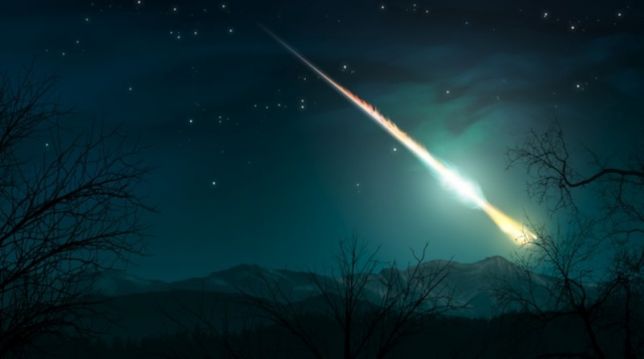Did you see a FIREBALL or a BOLIDE? Report it!
Anyone can report a fireball or bolide at the American Meteor Society website. If you see one, pay attention to your surroundings, the fireball behavior, and note the time. Then go to the AMS web site and report it! There you can see how many other people reported it as well!
What to watch for
Pay attention to the following–they are very helpful observations you can include in a report.
- Which direction were you facing? What was the direction of the fireball’s movement?
- How high up from the horizon was the fireball? Where did it begin and end? How long was the meteor? (Note that you can use your hand at arm’s length to measure distances in degrees. Your pinkie is 1º, your fist is 10º, and your hand with fingers stretched wide is 25º.)
- Was it fast or slow? How long did it last? (Count in “One-Mississippi” seconds.)
- Did a trail persist after the meteor passed?
- What colors did you see, if any?
- Did you see smoke?
- Did it explode or break into sections?
- Did it make any sound (like booming or sizzling)?
What is a FIREBALL?
Astronomers consider a fireball “a meteor brighter than any of the planets” (apparent magnitude -4 or greater). In other words, a fireball is even brighter than Venus!
What is a BOLIDE?
A bolide is an extremely bright fireball, especially one that explodes in the atmosphere. Bolides are often as bright as the full moon. Here’s a picture of a bolide that exploded over southern Europe.

Did you know?
Hundreds of thousands of fireballs are detected every year by the European Fireball Network and NASA’s All-Sky Fireball Network. Many go unnoticed by humans because most occur over the ocean and half occur during daytime.
